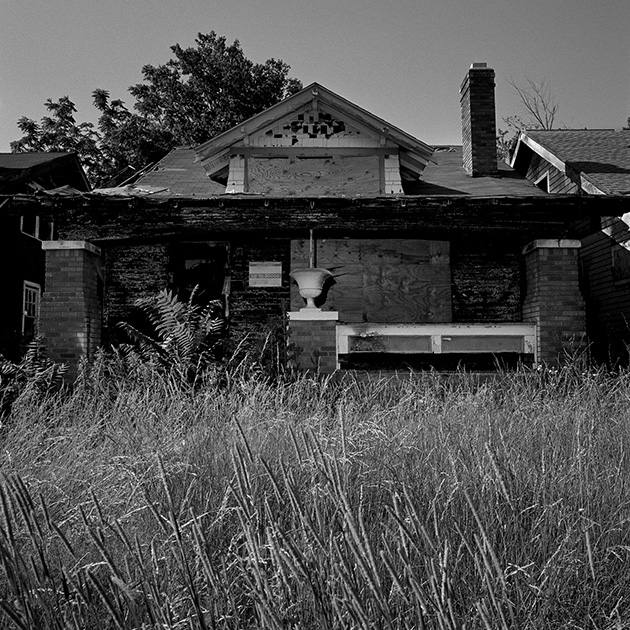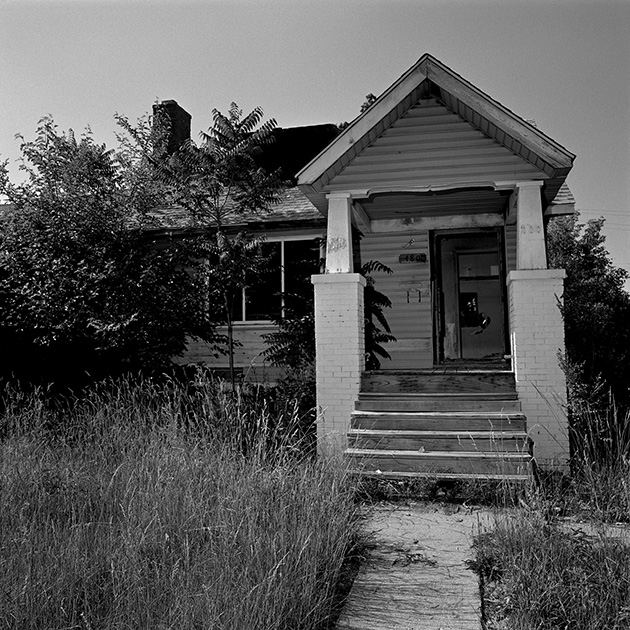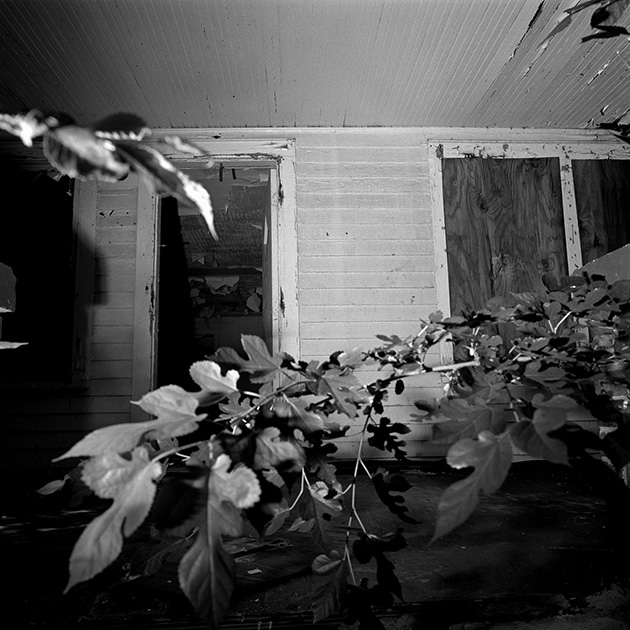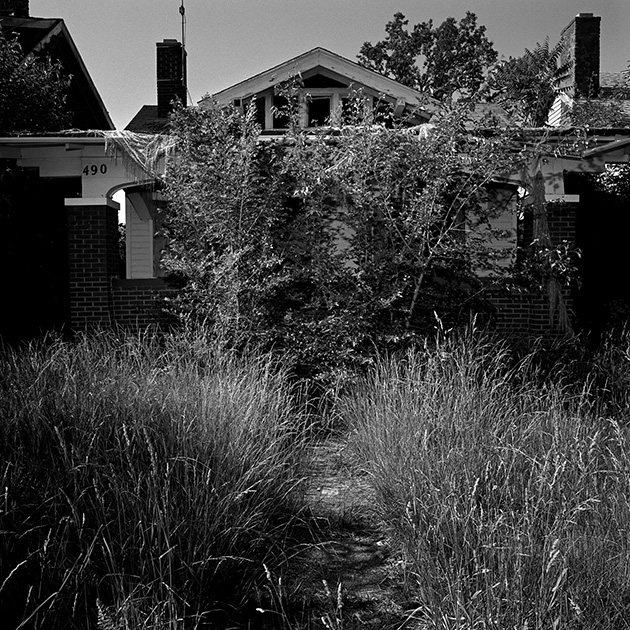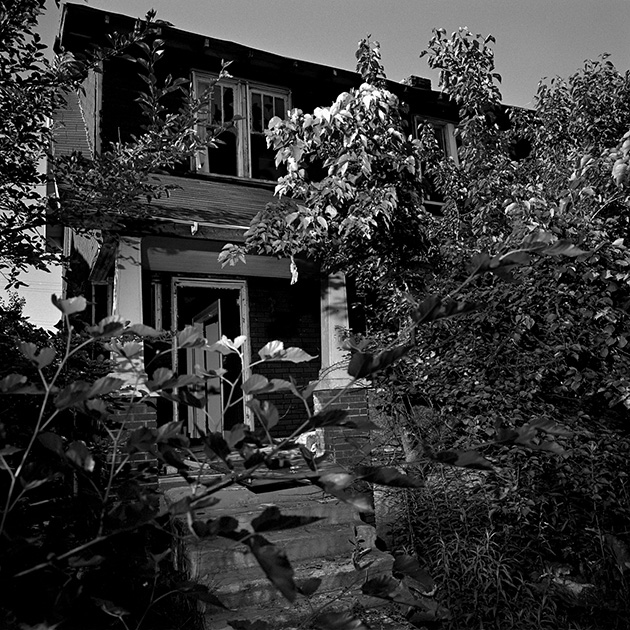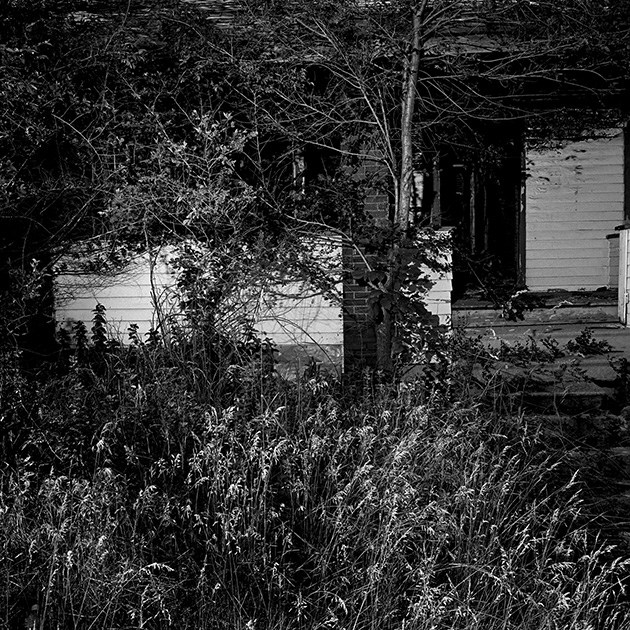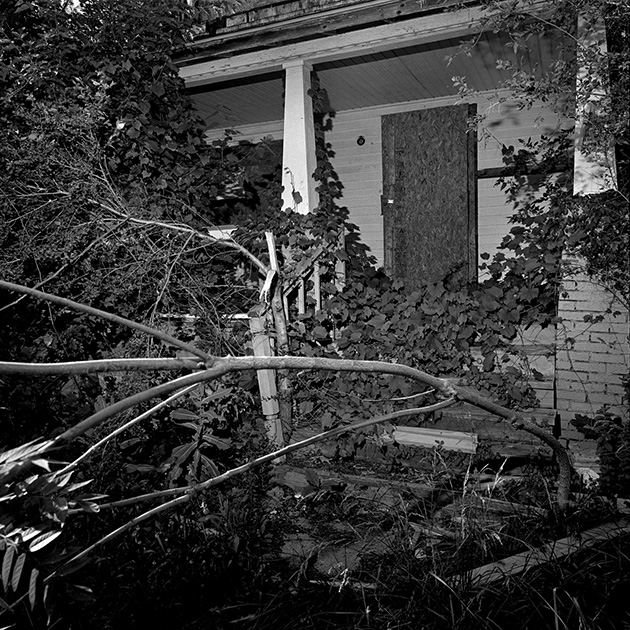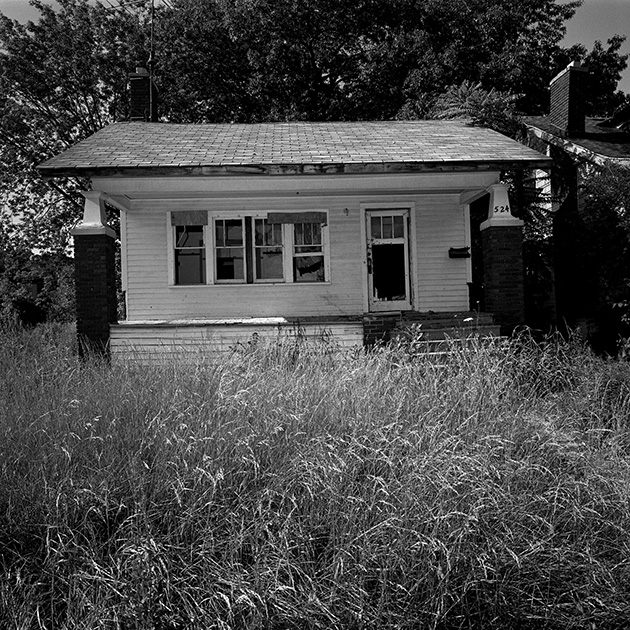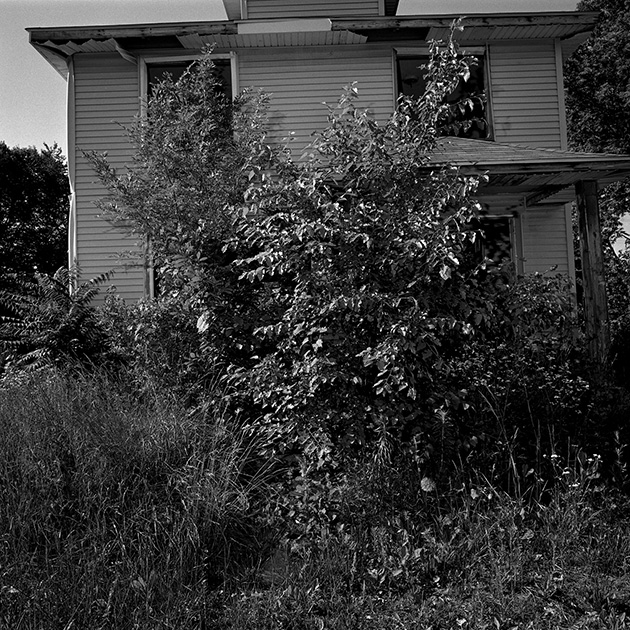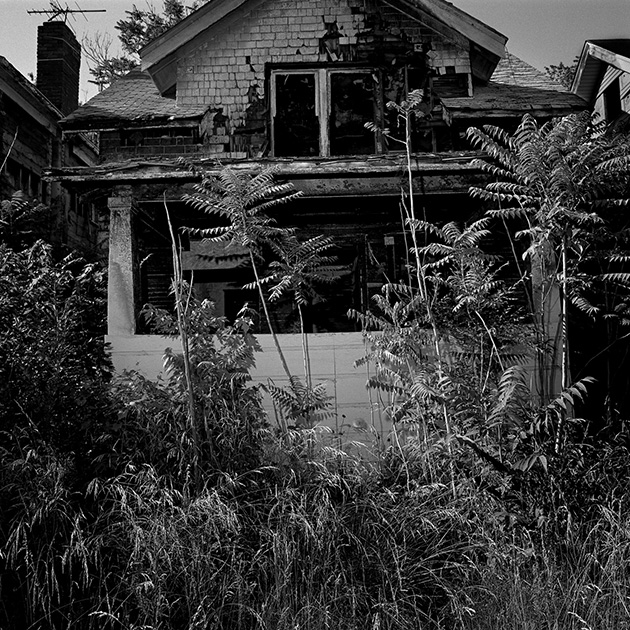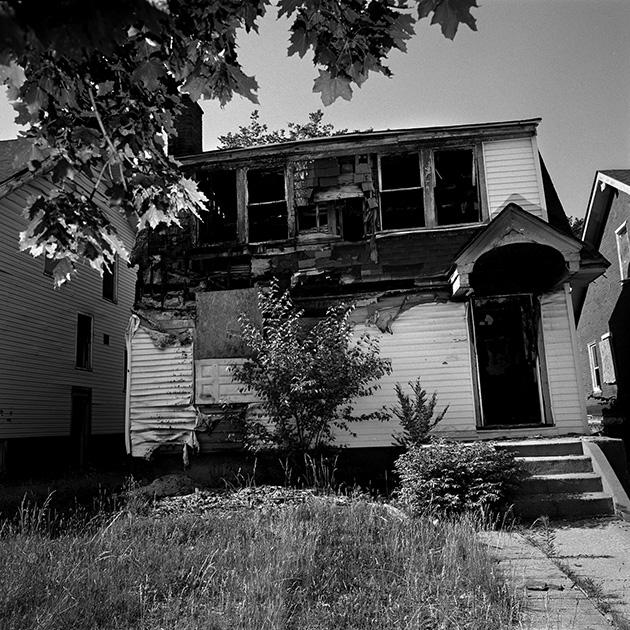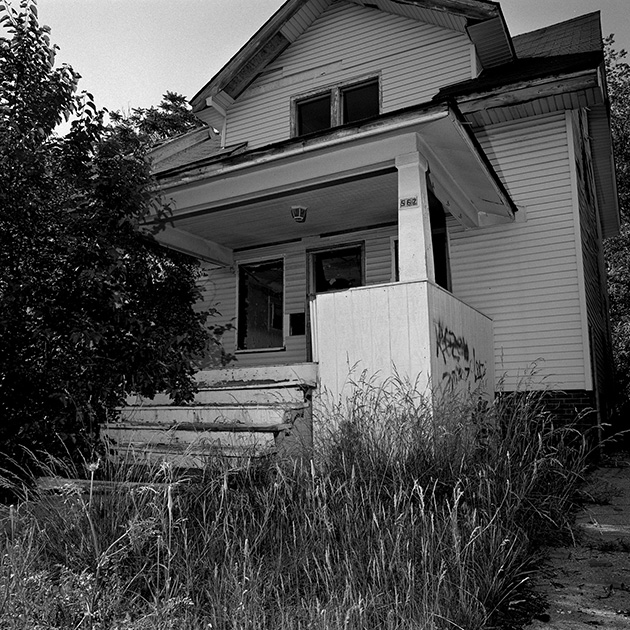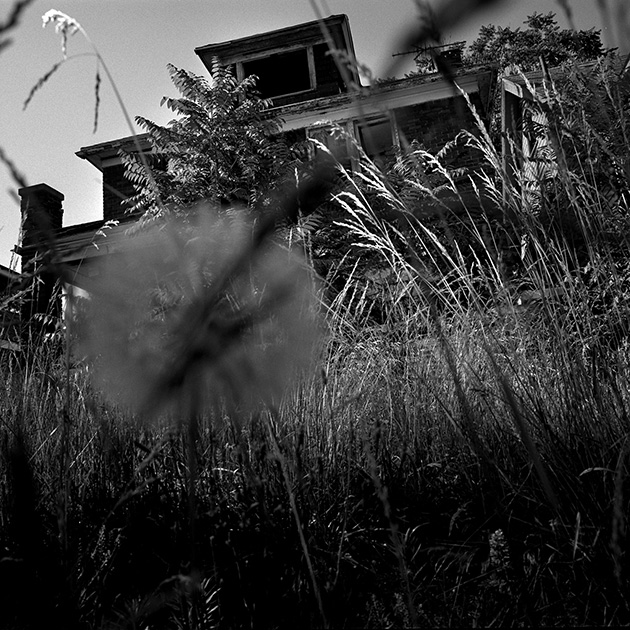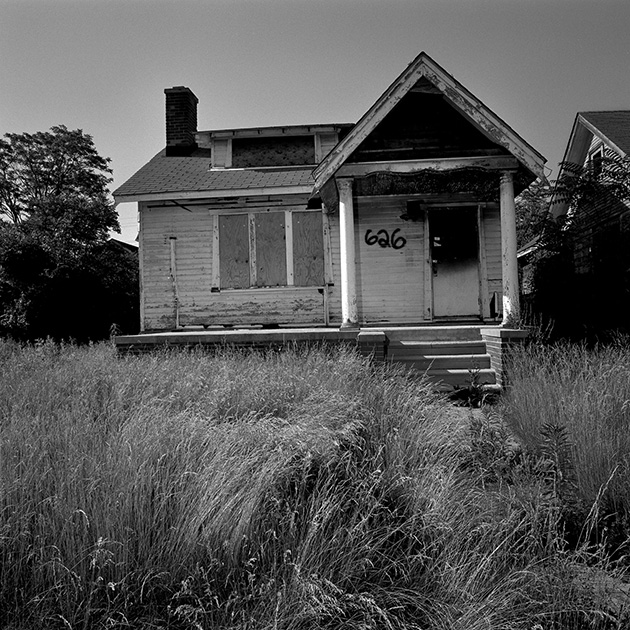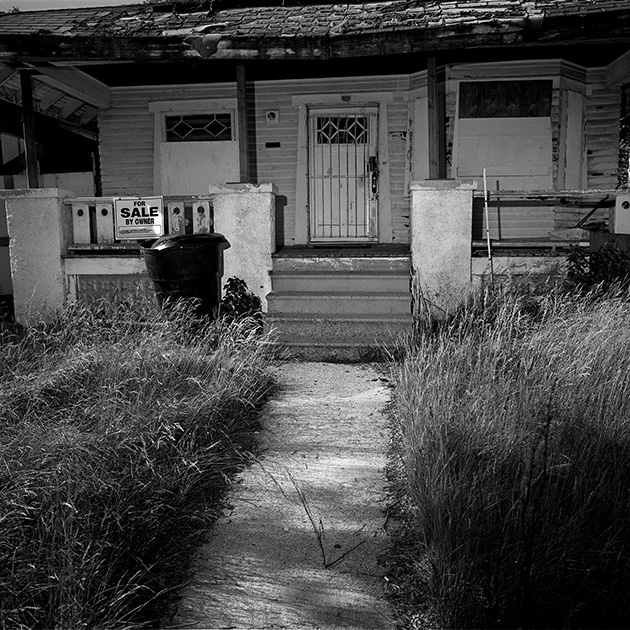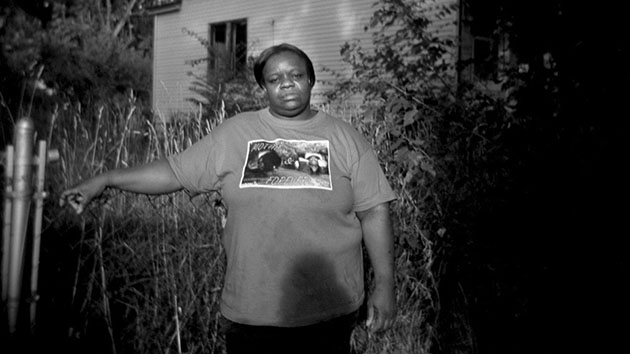Pictured here are abandoned homes found on one block on Detroit’s East Side. Some 45,000 abandoned houses pock Detroit, and the city only demolishes only 500 a year, thanks to concerns over lawsuits and environmental hazards, as well as lack of funding. The resulting rot and arson help pull the city further and further down. As Charlie LeDuff writes in his piece What Killed Aiyana Stanley-Jones: “Detroit has been synonymous with arson since the ’80s, when the city burst into flames in a pre-Halloween orgy of fire and destruction known as Devil’s Night. At its peak popularity, 810 fires were set in a three-day span. Devil’s Night is no longer the big deal it used to be, topping out last year at around 65 arsons. That’s good news until you realize that in Detroit, some 500 fires are set every single month. That’s five times as many as New York, in a city one-tenth the size.”
Read Charlie LeDuff’s related article, What Killed Aiyana Stanley-Jones, here.
